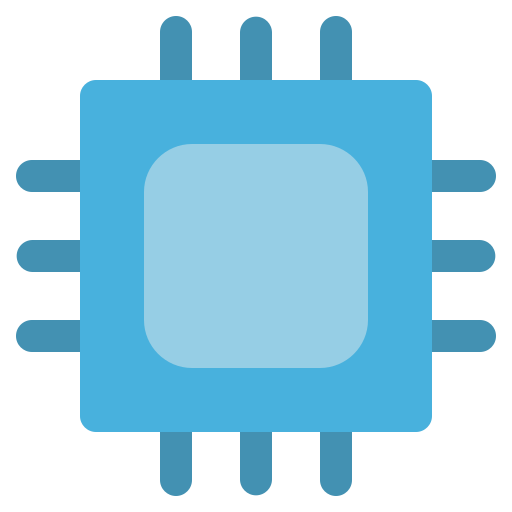MHLoppy
Currently studying CS and some other stuff. Best known for previously being top 50 (OCE) in LoL, expert RoN modder, and creator of RoN:EE’s community patch (CBP). He/him.
(header photo by Brian Maffitt)
- 73 Posts
- 113 Comments

 2·2 months ago
2·2 months agoThe change being that there was expected to be a change in the situation, which isn’t happening with 18A going slower than expected. This article doesn’t have much focus on the 18A part though.

 15·2 months ago
15·2 months agoIntel’s next-generation […] process […] more slowly than expected.
When was the last time one of Intel’s next-gen processes went well? 🫠

 3·2 months ago
3·2 months agoIn 2018, Tour and his colleagues discovered that this rapid heating process, called flash joule heating, can turn any carbon source—including coal, biochar, and mixed plastic—into graphene
Wait we discovered how to transform mixed plastic into graphene seven years ago wtf?

 1·2 months ago
1·2 months agoLooks pretty good at $30 USD, though even that price might be tough for patient buyers against dual towers that go on sale.
Tom’s Hardware has the first review I read and I was quite surprised by the quality of the review, where they (“partly because our main testing 9950X3D system is encountering problems at the moment”) compare it only against a Montech NX400 and an unnamed prototype dual-tower lmao

 2·2 months ago
2·2 months agoIt took a bit to get through the whole thing, but this looks like the most exciting development in the niche field of hardware gaming reviews since 1% lows became a thing (RIP Tech Report)

 2·2 months ago
2·2 months agoMissed this when I CTRL+F’d for “Xe3” 😅
edit: omggg I took a glance and thought it was the same content so I deleted the submission on Xe3 but it’s actually different lmao

 3·2 months ago
3·2 months ago(there is much less “tour” than I expected)

 4·2 months ago
4·2 months agoSeems like a surprising amount of extra effort to change (and match!) all the colors for what I assume is a niche variation of an already pretty low-volume product.
Makes me wish this amount of effort was made more often for colors other than beige lol.
Alphane Moon is literally Charlie Demerjian confirmed

 3·2 months ago
3·2 months agoUsing an arm wrestle picture for a legal battle with ARM seems about the right tone match for The Register tbf

 2·2 months ago
2·2 months agoI thought about posting the second report to !hardware@lemmy.world but it felt like a borderline fit and it’s from 2023 so I went “eh” ¯\_(ツ)_/¯

 4·2 months ago
4·2 months agoWell curiosity got the better of me, and the best sources I could find in ~an hour of researching suggest that they import most of the raw materials. For example, this report cites a Taiwanese source (written in Chinese), claiming:
According to statistics in the second quarter of 2022, the self-sufficiency rate of semiconductor manufacturing materials in Taiwan is 1 percent in front-end manufacturing and 15 percent in back-end manufacturing.
I don’t know what exactly goes into those figures, but this overview of the supply chain for semiconductors suggests that most of the raw silicon comes from not-Taiwan which is then also refined in not-Taiwan before it makes its way to TSMC-and-co.
Three products are used as raw materials to produce wafers in step 1: high-purity silicon, silicon carbide, and germanium. If we look at the trade balance of raw materials per country, we find that Germany is the top net exporter and China the largest net importer (see Figure 7). Germany has this position thanks to high-purity silicon exports, which have the highest trading value of the three raw materials. Although silicon is the second-most abundant element (by mass) on Earth after oxygen, there are only a few deposits that can be used for high-tech applications, mainly quartz deposits (chemical: silicon dioxide). High-quality quartz sands are widespread in Germany, as reported by the Federal Institute for Geosciences and Natural Resources (BGR).
A third of global high-purity silicon exports comes from Germany (the German company Wacker Chemie is one of the largest producers worldwide), and more than 70% of German silicon exports goes to China. Although China is one of the world’s major purified industrial silicon producers (7 of the 10 largest polysilicon manufacturers in 2020 were from China), it still imports a sizable amount and is the largest net importer of high-purity silicon. The US also exports a large share of silicon (a quarter of all exports), and Hemlock, based in the US, is one of the largest polysilicon manufacturers.
Of the other raw materials, China exports the largest share, with 35% of global germanium exports and 38% of global silicon carbide exports.
Silicon and other semiconductor raw materials are melted and cast in the form of a large cylinder called an ingot and then sliced into wafers (ASML). Wafers are then used to create the integrated circuits in step 2. By comparing the trade balance of wafers with that of raw materials, we can see that the top net importers of raw materials are also the top net exporters of wafers, confirming that countries like Japan and China import raw materials for the production of wafers.
These wafers are then mostly imported by Taiwan, followed by South Korea (see Figure 9). Trade data also shows that Southeast Asia plays an active role in the semiconductor industry. While more advanced front-end chip production is centered in Taiwan and South Korea, back-end assembly is centered in Southeast Asia.
I know that that’s not Taiwan-specific data but I wasn’t able to find any source saying that Taiwan had a lot of high quality raw silicon to work with.
Looking at the supply chain for this is actually pretty interesting - I had no idea Germany was an important source of raw materials for example o_o

 2·2 months ago
2·2 months agoThe reason TSMC is in Taiwan in the first place is their sand is particularly good for making silicon wafers.
Are you sure this is the case? I’ve never heard of this before and was under the impression that raw materials were largely imported for the manufacturing processes. Is it possible you got mixed up with something else?

 3·3 months ago
3·3 months agoCorsair will pay out $5.5 million USD and add clearer messaging to its memory packaging and product pages, including “up to” language for transfer rates and disclaimers concerning the overclocked nature of the RAM.

 2·3 months ago
2·3 months agoYes, but the shape of the holes/grille also significantly affects acoustics, so it’s not simply a 1D scale for hole size scaling between “maximum airflow” and “maximum dust filtration”. I personally doubt the stock side panel is maximally efficient for the balance between airflow vs dust vs acoustics, and thus don’t think Noctua’s modded panel is purely “we made the holes bigger” improvement.
This article is very old but still gives an idea of things: https://www.pugetsystems.com/labs/articles/Effects-of-Grill-Patterns-on-Fan-Performance-Noise-107/

 3·3 months ago
3·3 months agoThe holes of the original look big enough to not be doing much filtration for dust other than by passively reducing airflow tbh - seems like it serves as more of a finger guard than a dust filter.
I’d definitely be interested in seeing a comparison of the two that includes dust buildup though. I assume there’s probably an as-of-yet unused design which would do a better job of balancing dust filtration and airflow than the original pattern.

 8·3 months ago
8·3 months agoI am quite shocked about a fan grille swap having a 5+ dB benefit on a commercial product!

 1·3 months ago
1·3 months agoOkay so the serious answer was actually multi-GPU workstation (using consumer/prosumer hardware despite your reservations): https://www.youtube.com/watch?v=hTnggqnC3ug

As discussed here! https://retrolemmy.com/post/27617593